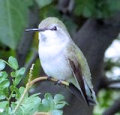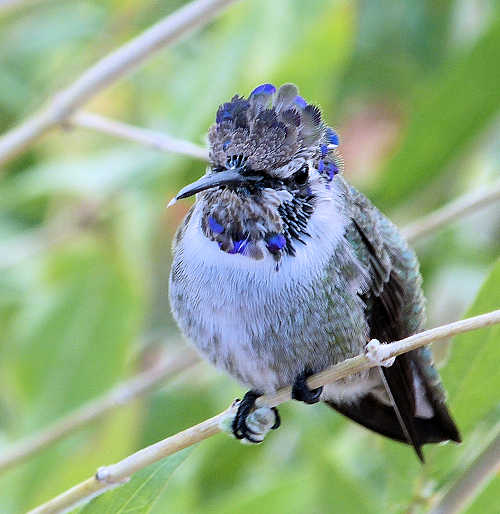The Hummingbird Garden
FOOD PLANTS
Culinary Herbs
Fruit, Berries, Nuts
Peppers, Chilies
Strawberries
Tomatoes
Vegetable Calendar Zone 9
ORNAMENTALS
Grasses
Ground Cover
Perennials
Shrubs
Succulents
Trees and Palms
Vines
SPECIALTY GARDENS
Butterfly Garden
Erosion Control
Fragrance Garden
Hedges, Barriers, Screens
Hummingbird Garden
Long Blooming
Winter-Blooming
GARDENING TIPS
Dealing with Critters
Digging Holes for Plants
Fruit: Selection, Cultivation
Garden Bed: Sterilizing
Landscaping
Microclimates
Parasitic Plants
Plant Placement
Selecting Plants
Soil Prep for Vegetables
USDA Hardiness Zones
Planting, Watering, Shrubs, Trees
NURSERIES / SUPPLIES
Online
Phoenix
Tucson
MEETINGS
Phoenix Meetings
Tucson Meetings
Tips for a Successful Hummingbird Garden

Hummingbird Flowers – Hummingbird Plants
Agastache rupestris:
Licorice Mint Hyssop
Orange-red, tubular flowers arrayed on spikes, edible.
Anisacanthus quadrifidus var. wrightii:
Flame Acanthus
Reddish-orange, tubular flowers.
Anisacanthus thurberi:
Thurber's Desert Honeysuckle
Orange to red, tubular flowers.
Bignonia capreolata:
Crossvine
A climbing vine with showy, colorful flowers.
Chilopsis linearis:
Desert Willow
Large, fragrant flowers, purple, pink or white.
Epilobium canum:
California Fuchsia
Reddish-orange flowers 1.5" (3.8cm) long in clusters.
Eremophila glabra:
Emu Bush
Red tubular flowers.
Eremophila hygrophana:
Blue Bells / Blue Emu Bush
Blue tubular flowers. Blooms most of year.
Eremophila maculata var maculata:
Spotted Emu Bush
Tubular flowers in red and other colors.
Erythrina flabelliformis:
Coralbean
Red, tubular flowers, 3" (7.5cm) long, in clusters.

Euphorbia lomelii (Pedilanthus macrocarpus):
Slipper Plant
Long succulent green stems with slipper-shaped red bracts containing flowers.
Fouquieria splendens:
Ocotillo
Very spiny green canes.
Orange to red flowers 1" (2.5cm) long in clusters at top of canes.
Hesperaloe parviflora:
Red Yucca
Reddish tubular flowers, with yellow throats,
hang from narrow spikes on stalks up to 6' (1.8m) high.
Justicia californica:
Chuparosa
Reddish tubular flowers. Blue-green, succulent-like stems.
Justicia spicigera:
Mexican honeysuckle
Clusters of orange, tubular flowers.
Lobelia laxiflora:
Mexican Lobelia
Orange-red tubular flowers with yellow throats, 2" (5cm) long.
Penstemon baccharifolius:
Rock Penstemon
Tubular red flowers. One of the easiest Penstemons to grow.
Longer blooming.
Penstemon barbatus:
Beardlip Penstemon
Red to red-orange tubular flowers arrayed on spikes.
Penstemon eatonii:
Firecracker Penstemon
Bright red tubular flowers, 1" (2.5cm) long.
Blooms on and off from spring into fall, depending on rain. Easy to grow.
Penstemon palmeri:
Palmer's Penstemon
Fragrant, light pink to white flowers in clusters.
Penstemon parryi:
Parry's Penstemon
Dark pink to magenta tubular flowers with flared lobes.
Penstemon pseudospectabilis:
Desert Penstemon
Magenta flowers, 3/4" (19mm) long, in spikes.
Penstemon superbus:
Coral Penstemon
Dark pink, red or orange-red flowers, 3/4" (19mm) long on spikes.
Salvia coccinea:
Scarlet Sage
Bright red flowers, repeat blooms most of year.
Salvia elegans: Pineapple Sage
Red or reddish-orange flowers, repeat blooms in alternate years.
Salvia farinacea: Mealycup Sage
Blue flowers arrayed on spikes bloom all year.
Salvia greggii:
Autumn Sage
Red flowers, 1" (2.5cm) long, repeat blooms most of year.
Tecoma stans:
Yellow Bells
Yellow bell-like flowers 2" (5cm) long.
Latest update: May, 2025
© 2008-2025 by GardenOracle.com

